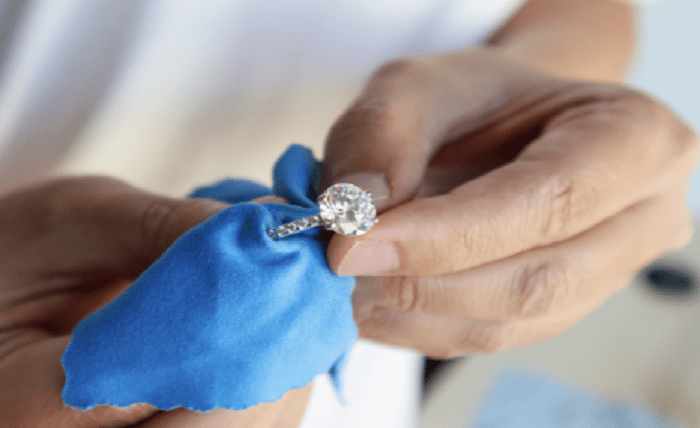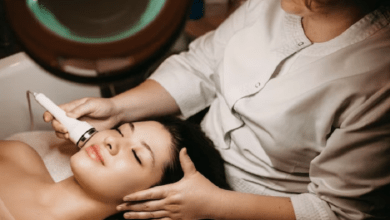
Rings, watches, and jewelry can be prized possessions. Whether it’s a wedding ring, a family heirloom, or luxury watches, it is crucial to keep all your pieces looking their best. Caring for and maintaining your jewelry preserves its appearance and helps it retain its resale value. Unfortunately, precious metals like gold and silver are soft metals and are easily scratched and damaged.
The best way to prevent scratches and damage is to avoid situations that put your jewelry at risk, like wearing them while cleaning or playing sports. However, if they do sustain damage, there are steps you can take at home and with professional assistance to restore your beloved jewelry to its original condition.
Steps to Avoid Scratches and Damage
It is impossible to avoid damage to any piece of jewelry you wear regularly. This is unfortunately due to the materials that most jewelry is made from. Most solid gold jewelry is made from 14K gold blended with other metals to improve its hardness and scratch resistance. However, even gold alloys rate low on the Mohs Hardness scale, leaving them vulnerable to damage.
Even though damage can’t be avoided, you can take steps to reduce the risk and help minimize the chance that your jewelry gets scratched or damaged.
- Store anything made out of gold or silver individually in a soft felt pouch. The felt pouch helps wick away moisture that could tarnish the piece, and storing pieces individually keeps them from scratching each other.
- Don’t wear rings while doing housework or using harsh chemicals. Household cleaners often contain bleach, ammonia, and other chemicals that can affect the luster of precious metals. If repeatedly exposed, they can cause the metal to weaken and break. Remove your jewelry before cleaning, or wear a durable set of gloves.
- Don’t wear rings while gardening or doing manual labor. Dirt can be abrasive, and tools can accidentally damage jewelry due to impact. Remove all jewelry before doing any manual work.
- Do not swim or soak in a chlorinated hot tub with your jewelry on. The chlorine in the water can weaken gold or silver, significantly increasing the chance of breaks. Sterling silver is often blended with copper, which can turn green when exposed to chlorine.
- Take your jewelry off before showering, using lotion, or applying cosmetics. The ingredients in soaps, lotions, and cosmetics contain substances that can smudge your jewelry and reduce the luster and shine.
- Remove your jewelry before bed. If you have rings with large diamonds or delicate settings, you can accidentally damage, scratch, or break pieces while sleeping.

At-Home Care and Cleaning
Many minor scratches and blemishes can be cleaned and cared for at home. Most experts recommend lightly cleaning all jewelry once every month. But don’t over-clean your pieces. This can harm the finish and affect the luster of the precious metal.
Before cleaning, it is essential to know what your pieces are made from. The best cleaning method varies depending on the metal used and what type of jewelry it is. If in doubt, visit a professional jeweler before trying anything at home.
Tips for removing scratches and cleaning gold
Jewelry made from 14K gold is a naturally soft material, and even when mixed with other metals for jewelry, it can still scratch easily. Luckily, it is also cleaned and repaired effortlessly at home with a few simple steps:
- Fill a bowl with warm water and add a few drops of liquid dish detergent. Soak your jewelry in the water for five minutes. However, never soak a watch in soapy water. While many modern timepieces like IWC watches are waterproof, the soap residue can damage the internal mechanism.
- After soaking, rinse clean and buff with a jewelry polishing cloth until the scratches are gone. Gently buff and avoid using the cloth on anything other than the gold parts of the jewelry. It could be too abrasive for glass or precious stones.
- Consider using a soft-bristled baby’s toothbrush or a Q-tip and use the lightest pressure possible for more hard-to-reach or dirty areas of the piece.
Tips for removing scratches and cleaning silver
Silver tarnishes when the silver reacts with sulfur creating silver sulfide, which causes dark patches to occur on the surface. To avoid scratching your silver jewelry with excessive scrubbing, soak your pieces in an alkaline solution on your stovetop first.
- Line a small pan with aluminum foil with the shiny side facing up. Place your pieces on the bottom and ensure that the silver is touching the foil.
- Lightly sprinkle with salt and baking soda. Use one tablespoon of each per cup of water.
- Add boiling water until the pieces are covered, and the salt and baking soda have dissolved.
- Soak until the water is cool enough to remove the jewelry and rinse with clean water to remove the baking soda residue. Gently pat dry with a soft cloth.
- You can also polish your silver pieces with silver polish, which has the added benefit of leaving a protective coating on the silver for future protection.
- While there are effective silver cleaners on the market, find one that doesn’t contain ammonia or other abrasive chemicals that could weaken or damage your silver.
Tips for removing scratches and cleaning other types of jewelry
Other types of jewelry like gemstones or pearls require different cleaning methods. Gemstones and pearls are sensitive and can be easily damaged while cleaning. It is always a good idea to clean them as gently as possible with the most gentle soaps possible.
Know what type of gemstone you are cleaning. The care and cleaning methods are different for each kind of stone. Diamonds should be soaked once a week in a solution of water with a few drops of mild dish soap. They should be gently dried using a soft, lint-free cloth.
Pearls are particularly easy to scratch accidentally, so clean and store pearls separate from other pieces.
Platinum and tungsten carbide are more scratch-resistant materials but are not immune from scratching. Basic care practices such as soaking in warm water with a few drops of dish soap, buffing dry with a soft cloth, or lightly scrubbing with a soft-bristled toothbrush should help keep luster on these metals.

Professional Cleaning and Repair
Certain types of cleaning and repair are better left to the professionals. Deep or long scratches should be repaired professionally. Most jewelry manufacturers recommend a yearly professional cleaning no matter the condition of the piece to keep everything looking its best and prevent minor scratches from becoming larger and more unsightly later on.
Grime buildup in settings and clasps can be difficult to remove manually at home. Jewelers use ultrasonic cleaners to eliminate grime and stains without harsh scrubbing.
Some jewelry, such as watches, are always better off being cared for by professionals. Luxury, heirloom watches like a women’s Rolex or other luxury brands have precious metal bodies but are also often embellished with diamonds, other precious stones, or multiple kinds of precious metals. The risk of accidental damage with at-home cleaning is high, and the care a watch repair shop can give is worth the cost.
Scratches Are Part of the Story
Jewelry is bought to be worn and passed down through the family. This combination will almost certainly result in the pieces being scratched over the years. These scratches, though, tell the story of the piece and those who wore it.
It is important to keep your jewelry clean and shiny, but it is also essential to let it tell its story with a few blemishes. It will make it unique, make it yours, and make it a treasured family heirloom.




